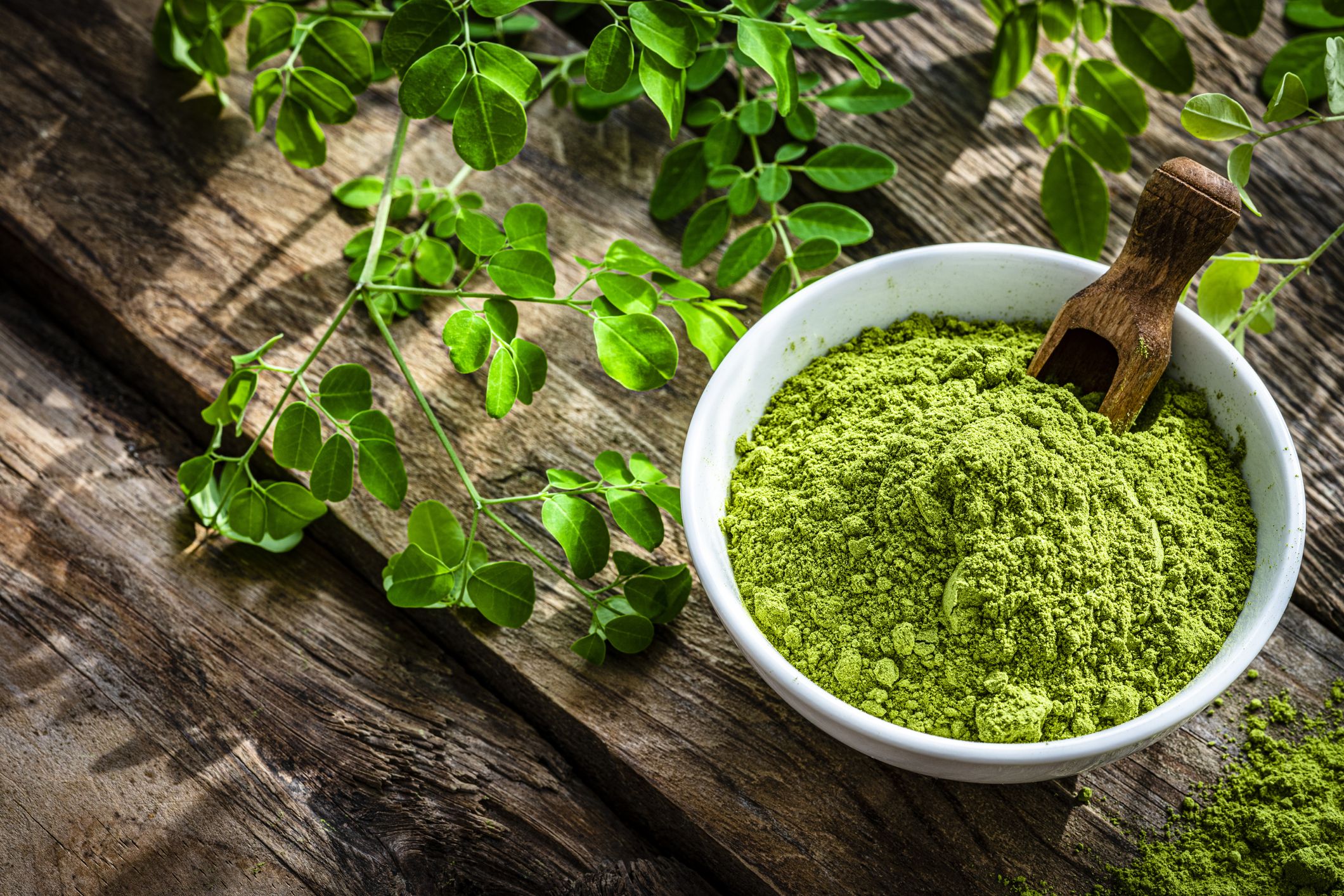Moringa, scientifically known as Moringa Oleifera, is a remarkable tree that has garnered significant attention for its myriad health benefits and wide-ranging medicinal applications. Every part of the Moringa tree, from its leaves to its roots, bark, gum, flowers, pods, seeds, and oil, serves a valuable purpose in traditional medicine and offers a rich source of essential nutrients and potent bioactive compounds. This comprehensive article delves into the diverse uses of Moringa and its impressive potential for modern medicine.

Nutritional Value and Medicinal Benefits
Moringa Oleifera is celebrated for its nutritional richness and an array of bioactive compounds that include vitamins, proteins, beta-carotene, amino acids, phenolics, zeatin, quercetin, beta-sitosterol, caffeoylquinic acid, and kaempferol. Its extensive list of medicinal benefits includes:
- Cardiac and Circulatory Stimulation: Moringa exhibits properties that can stimulate the heart and improve circulation.
- Antitumor: This wonder plant demonstrates anticancer potential, with bioactive compounds such as niazimicin.
- Antipyretic: Moringa’s anti-inflammatory properties make it an effective antipyretic agent for reducing fever.
- Anti-Inflammatory: Moringa has robust anti-inflammatory properties, which can be applied to relieve pain, inflammation, and various ailments.
- Antiulcer and Antispasmodic: Moringa’s roots, leaves, and seeds contain compounds that provide relief from ulcers and muscle spasms.
- Antibacterial and Antifungal Activities: Moringa’s leaves, seeds, and oil possess potent antibacterial and antifungal properties, making them invaluable in addressing various skin infections and bacterial diseases.
- Diuretic and Antihypertensive: Moringa can act as a diuretic, promoting increased urination, and help lower blood pressure.
- Cholesterol Reduction: Moringa leaves contain bioactive phytoconstituents, like beta-sitosterol, which can lower cholesterol levels.
- Antidiabetic: Moringa leaves have been found to reduce blood glucose levels and show promise as an antidiabetic remedy.
- Hepatoprotective: Moringa leaves and other parts of the plant offer protection against liver damage, particularly from toxins and certain medications.
- Antioxidant: Moringa is a rich source of antioxidants, such as quercetin and kaempferol, which combat free radicals and oxidative stress.
- Antihelminthic: Moringa possesses antiparasitic properties, effective against parasitic worms.
- Antifertility: Certain parts of the Moringa tree have demonstrated antifertility effects.
- Anti-asthmatic and Analgesic: Moringa alkaloids have shown to be useful in treating asthma and providing pain relief.
- Prevention of Ocular Diseases: The vitamin A content in Moringa can help prevent eye problems, such as night blindness and cataracts.

Specific Uses of Moringa Parts
Moringa is a versatile plant with diverse applications for different parts of the tree:
Leaves:
- Rubbing Moringa leaves on the temples can alleviate headaches.
- Poultices of fresh leaves can stop bleeding from cuts.
- They exhibit antibacterial and anti-inflammatory effects when applied to wounds or insect bites.
- Leaf tea can treat gastric ulcers and diarrhea.
- High protein and fiber content in Moringa food products make them effective for malnutrition.
Flowers:
- Moringa flower juice enhances the quality and flow of mother’s milk during breastfeeding.
- It is useful for urinary problems and serves as a cold remedy when prepared as tea in some cultures.
Pods:
- Raw pods act as dewormers and can help with liver, spleen issues, and joint pain.
- They are valuable in addressing malnutrition and diarrhea due to their high protein and fiber content.
Seeds:
- Moringa seeds are used for their antibiotic and anti-inflammatory properties, addressing arthritis, rheumatism, cramps, STDs, and boils.
- Roasted seeds and oil can promote urination and provide relief for epilepsy.
- They are effective against skin-infecting bacteria, such as Staphylococcus aureus and Pseudomonas aeruginosa, due to the antibiotic and fungicidal compound, terygospermin.
Roots, Bark, and Gum:
- The roots and bark are more concentrated with properties similar to other parts of Moringa, including cardiac and circulatory benefits.
- In some regions, roots are pounded with salt to create poultices for rheumatism and kidney pain.
- Moringa gum is diuretic, astringent, and has abortifacient properties, used against asthma.
Moringa Oil:
- Moringa oil has been employed for addressing hysteria, scurvy, prostate problems, and bladder issues.
- Villagers in Oman use Moringa oil for stomach disorders, as well as in perfumes and hair oils.
Ayurvedic and Siddha Traditions:
- Both Ayurvedic and Siddha medicinal systems have recognized the value of Moringa in their practices. It serves as a natural antibiotic, aids in childbirth, treats liver disorders, and offers various other applications.
Conclusion
Moringa Oleifera is a small but mighty tree with an impressive array of medicinal properties and nutritional benefits. From its anti-inflammatory, antioxidant, and antibacterial properties to its potential in treating various health conditions, Moringa holds promise as a versatile and valuable component of modern medicine. While many bioactive compounds have already been identified, ongoing research is essential to harness the full therapeutic potential of this remarkable healer. Moringa has a rich history in traditional medicine and may continue to provide answers to numerous health challenges in the future.
